If you’ve ever gone camping in the cold, you know that it is at least slightly warmer inside the tent than outside. The blast of cold air that hits your face when you unzip the tent is clear data! Despite this, it generally isn’t a good idea to rely on your tent to keep you warm.
Before you go cold weather camping, here’s what you need to know about how much warmer it really is inside your tent vs. outside, plus info on 3-season and 4-season tent inside temperatures, whether single or double layer tents are better, how tent size affects warmth and how to make your tent warmer.
Quick answer:
Three-season tents are usually only about 5 degrees F warmer inside than outside. Winter tents are better designed to trap heat and are typically 10-15 degrees warmer inside. Insulated or expedition tents can be over 25F warmer inside. However, because of condensation issues, you generally shouldn’t rely on your tent for warmth. It’s your sleeping bag and pad which really keep you warm.
Also Read:
A Tent Isn’t Supposed to Keep You Warm
As a camper, you probably already know about layering systems for your clothes.
- Base layer: Wicks sweat away from your body to keep you dry
- Mid layer: Fluffy layer to provide insulation and trap heat
- Shell layer: Protects against the elements
The same layering system also applies to your sleep setup. Your PJs are your base layer, your sleeping bag and pad are the mid layer. And your tent is the shell layer.
Just like with shell clothing, the tent isn’t supposed to keep you warm. Instead, it indirectly keeps you warm by blocking wind so heat isn’t lost from the mid layer. The shell also keeps you dry so you don’t get cold from evaporative heat loss.
Will Body Heat Warm Up a Tent?
When at rest, the human body produces approximately 80 to 120 watts per hour. If the tent is well-sealed, it can trap this heat. This effectively allows the air inside the tent to act as an extra insulation layer and increase temperatures 5-15F without any extra heating. (1, 2, 3, 4)
Notes:
- By comparison, a candle produces approximately 40 watts of energy.
- If you have a really good sleeping bag, your tent won’t get much warmer. The sleeping bag will trap body heat inside so it never makes it to the tent area.
If Your Tent Traps Heat, It Also Traps Moisture
Any tent which can trap heat will also trap vapor in the air. A human expels approximately 15ml (0.5oz) of water per hour during sleep. When the hot vapor touches the cold exterior of your tent, condensation forms.
It might not seem like a lot, but all that vapor can create a serious condensation problem. You can end up with condensation raining down on you from above. This causes you to get wet which in turn leads to evaporative heat loss and potential hypothermia.
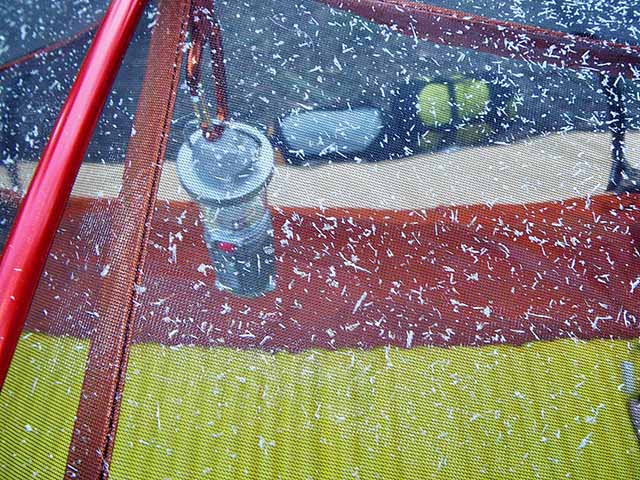
Ice crystals from condensation, seen on the inner tent after the fly was removed (there was more condensation on the outer fly)
Temperature Inside 3-Season Tent vs. Outside
Three-season tents are generally designed with ventilation in mind. They don’t trap warmth well and add very little in terms of warmth.
Most of this anecdotal evidence shows that the temperature inside the tent got to approximately 5 degrees warmer. Some claim that their 3-season tents were 10F warmer inside. Yet there are others who said that there was absolutely no difference between the temperatures inside and outside.
How Much Warmer Are 4-Season Tents?
Unlike 3-season tents, many 4-season tents are actually designed to trap heat. They are made from thicker materials which prevent heat transfer. Vents, windows and doors can be completely closed to keep wind from blowing heat away.
Expect it to be 5-10 degrees F warmer inside a 4-season tent versus the outside temperature. Expedition tents and insulated tents can be 15+ degrees F warmer inside than outside temperatures.
*Check REI outlet for discounts on winter camping tents.
Some Data:
- Exped Sirius: Anecdotal report says that this winter tent gets 10-15F warmer inside when it is 30F outside.
- Crua insulated tent: According to their own tests, their insulated tent was approximately 25F warmer inside when outside temps were 20F.
- Arctic pyramid tent: A study found that, when the temperature outside was approx. 21F, the temperature inside the tents increased to approx. 40F – an increase of nearly 20 degrees F.
- Refugee tent: This report found that cabin-style tents for refugees were approximately 48F inside versus 35F outside – an increase of 13 degrees.
Are Double-Wall or Single-Wall Tents Warmer?
Single layer tents are warmer than double-layer tents because they are fewer places for wind to get in. However, this usually means they trap moisture too – leading to serious condensation issues in cold weather. Only use a single-layer tent in cold weather if it has good ventilation.
Because of condensation issues, double-layer tents are almost always the better choice for camping in the cold. The mesh layer inside a double-wall tent allows moisture to escape. Some double-layer tents also have flies which go all the way to the ground. This effectively traps the air between the two layers. The air acts as an insulation layer and your tent will be much warmer. (9, 10, 11, 12, 13)
Are Smaller Tents Warmer?
Small tents are theoretically warmer because there is less space inside to warm with your body heat. However, this theory only holds up if your tent can actually trap the body heat inside. Since most tents can’t trap heat efficiently, it doesn’t make sense to buy a smaller tent because you hope it will be warmer.
If warmth is your primary concern and you are camping with multipole people, it often makes more sense to get a larger tent. It will be much safer to use a gas heater or candle heater inside a large tent than a cramped small tent. You’ll also find it easier to stay away from the sides of the tent, thus reducing contact with condensation.
There are exceptions though — When camping in serious snow, it is a lot easier to set up camp with a small tent or bivvy!
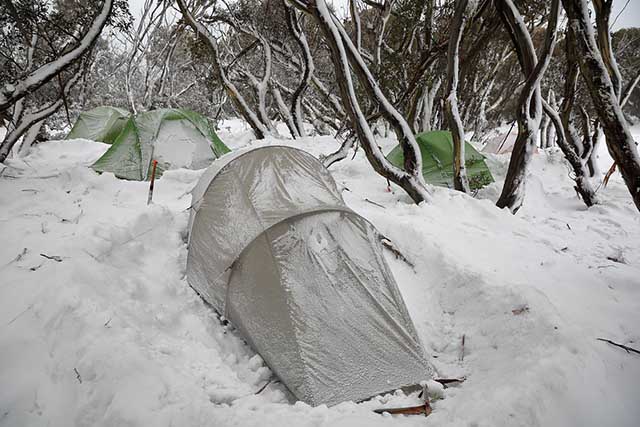
Tips for Making Your Tent Warmer
Seal Sides with Snow or Debris
With two-layer tents, wind can blow in through the gap between the two layers. Pile snow or leaf debris around the edge of the tent. This will create a seal to keep wind out.
Keep Tent Out of Wind
You’d be amazed at how much heat the wind can carry away from inside your tent. Consider pitching your tent next to a natural wind break, like between trees.
Cover Inner Tent
If your two-layer tent has a lot of mesh, then wind will get into the tent and make you feel cold. A cheap, simple solution is to cover the inner tent with a windproof material. Then pitch the fly over this.
Some materials are reflective and (theoretically) bounce body heat back towards you. Make sure the reflective side is facing inwards.
Recommendations for covers include:
- Reflectix insulation
- Aluminet
- Mylar blankets
- Nylon tarp
*Attach anchors to the cover so it doesn’t blow away. If it doesn’t have grommets, you can put a stone in one corner and tie rope around this.
Use a Tent Heater
If it is seriously cold, then consider getting a tent heater. Candle heaters are cheap and small enough to be used in backpacking tents. Some gas heaters (like these) can safely be used in larger tents and there are also winter tents which have holes for placing wood stoves.
The bottom line?
Unless you are willing to invest in a good winter tent with lots of ventilation and/or insulation, don’t rely on your tent to keep you warm. Your sleeping bag and pad are what really matter – and it’s probably cheaper to upgrade these than buy a winter tent.
Other sources:
https://www.reddit.com/r/Ultralight/comments/b7wr1l/resources_on_tent_warmth/
https://en.cnki.com.cn/Article_en/CJFDTotal-JZKX201012014.htm
https://thedyrt.com/forums/t/keeping-your-tent-warm/1253/23
https://thedyrt.com/forums/t/keeping-your-tent-warm/1253/23
Image credits:
“Condensation crystals on my tent” (CC BY-NC 2.0) by Al_HikesAZ,
“Polaris” (CC BY-NC-ND 2.0) by Strychnine,
“Mt. Ichankoppe ski touring and winter ca” (CC BY-NC 2.0) by Robert Thomson,
“P1010111” (CC BY-NC-SA 2.0) by Andrew Rollinger,
“Snow Camp” (CC BY 2.0) by blachswan


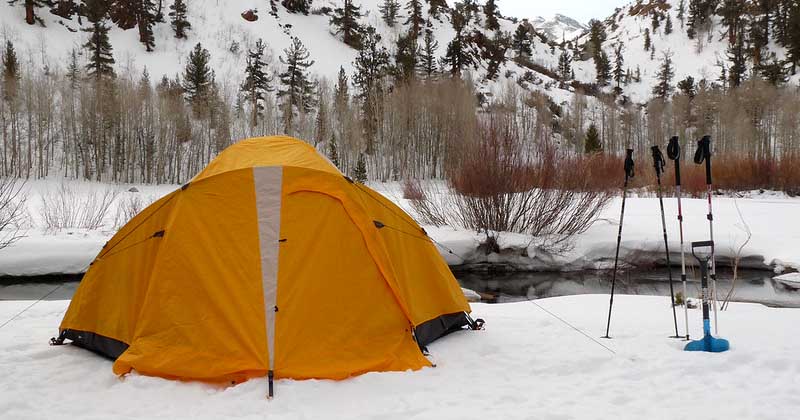
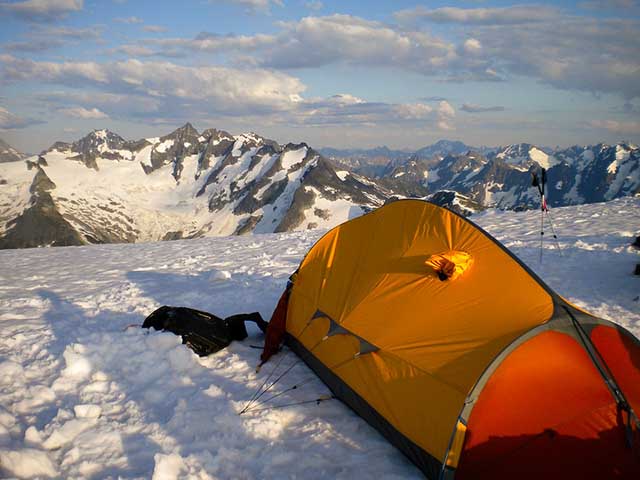
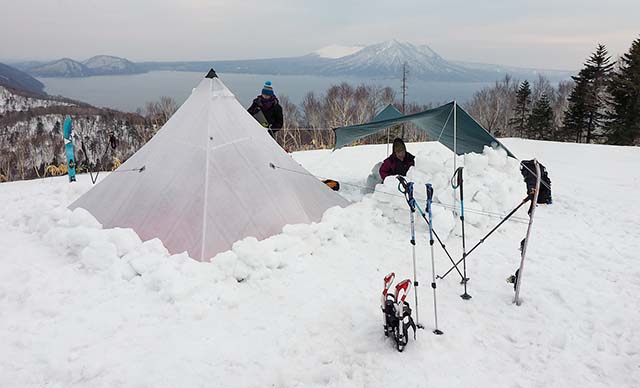
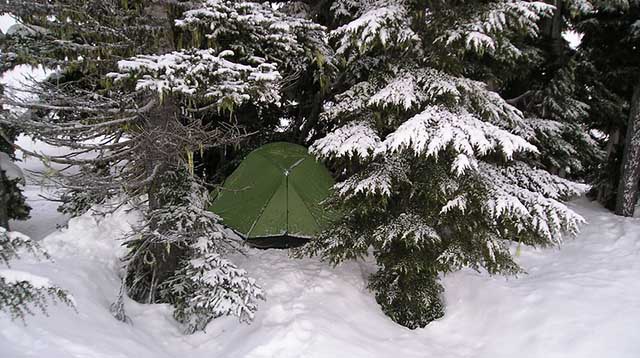
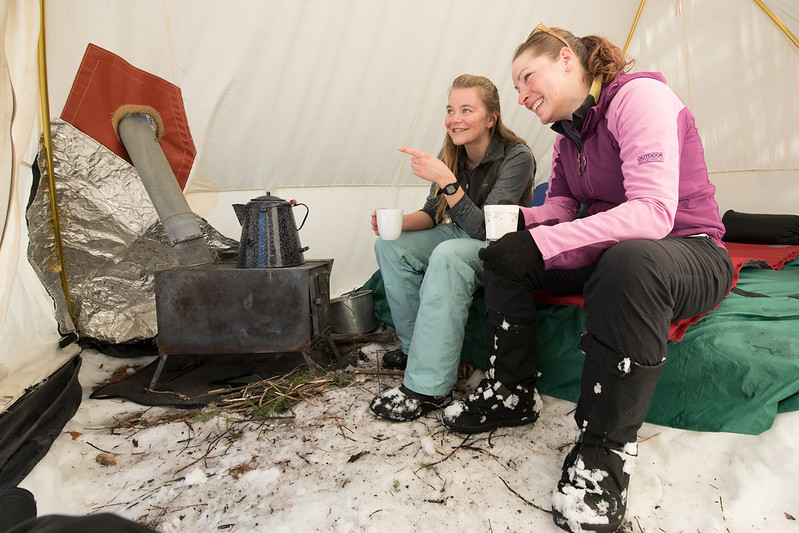
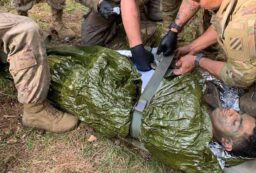
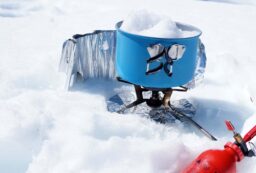








6 Comments
Brian bauer
November 17, 2021 at 10:40 pmAlthough it may seem counterintuitive, stripping down to bare essentials inside a proper sleep system will keep you warm at night, as opposed to sleeping with several layers. I have also slept well at 15F in a hammock, it ‘rains’ too much inside a tent, for me.
Diane
November 19, 2021 at 11:06 amI’ve heard that before — about how sleeping naked in a sleeping bag is warmer than with pjs. It’s been debunked across the net multiple times. However, there is no need to have multiple layers when sleeping. You end up sweaty and thus cold. I treat sleep systems the same as any clothing layering system: base layer (pjs), mid insulating layer (sleeping bag) and shell (tent). And soft wool socks make all the difference. 🙂
Chuck
April 2, 2022 at 5:22 amTry light thin layers for the best results.
Wild Bill
March 10, 2023 at 9:46 pmMany a hunter has been froze out of the mountains trying to sleep in a tent without some source of heat. Even a small wood stove can make or break a camping trip in sub-zero weather. Spend the extra money and purchase a hot tent with a stove jack and wood stove. You can save a lot of wasted money discarding the cheaper budget tents.
Herbert
March 19, 2023 at 1:44 amI know you have to warm the sleeping bag if it is cold. When it is warm inside it is only your face that is exposed to the cold and that is worse. Your nose gets easily cold. A scarf use too help. A blanket on your head and fold it so you get air. Isolation to the grund and sleeping mats are important. I have been thinking a kind of salt could both suck up the moisture and store the heat energy. Just a thought.It is a tricky time camping now good luck and be careful Have a nice camping season it is rough here in Sweden tio.
Diane
March 20, 2023 at 9:51 amI still haven’t figured out a good solution for keeping my face warm when camping in the cold. Anything that goes over my nose and mouth ends up wet. :/
*I’m not sure what you mean by warming the sleeping bag. It traps our body heat. I just try to run around (literally do laps around the campsite!) before getting into the sleeping bag. Then my excess body heat gets trapped in te bag right away so I don’t have to wait to feel warm.